
Hi all, Wendy here with a fun mixed media project to share. What’s great about this project is that even if 100 people make it, no two will be the same. I encourage you to use this tutorial as a jumping off point and use things you have in your stash (not that we hoard things lol) to create your own one of a kind Spooky Shadow Box!
Spooktacular Mixed Media Spooky Halloween Shadow Box
Supplies:
iCraft Deco Foil Transfer Sheets – Silver, Copper and Gold
Other supplies: Shadowbox, matboard, patterned paper, Distress Ink, paint, Halloween themed dies and die-cutting machine, twigs from the yard, hot glue, dried flowers, Halloween embellishments, faux spiderweb and a heat tool of some sort (I used a Walnut Hollow Hot Marks tool).
Spooktacular Mixed Media Spooky Halloween Shadow Box Instructions:
Step One:
Choose a shadow box (I chose one from my stash), draw boxes where you want dividers and measure the spaces or pieces of chipboard and place to get an idea of what you want. Cut patterned paper the sizes you need to fill the boxes. Paint the outside and inner edges of the shadow box with craft paint.
**The real step one is to gather way more items than you think you could possibly use and bring them to your work area so you can dig through them as you are working (as pictured). After this you may move to the official “Step One.”
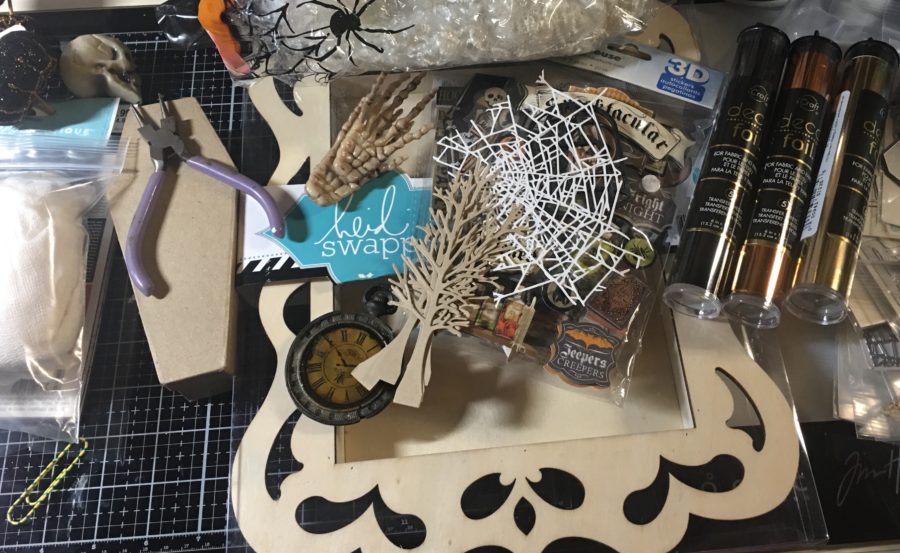
Hint: If you unsure how to come up with a layout for the boxes, cut one piece of paper to fit the inside of the shadow box and then cut it into pieces of various sizes and place back into the shadow box.
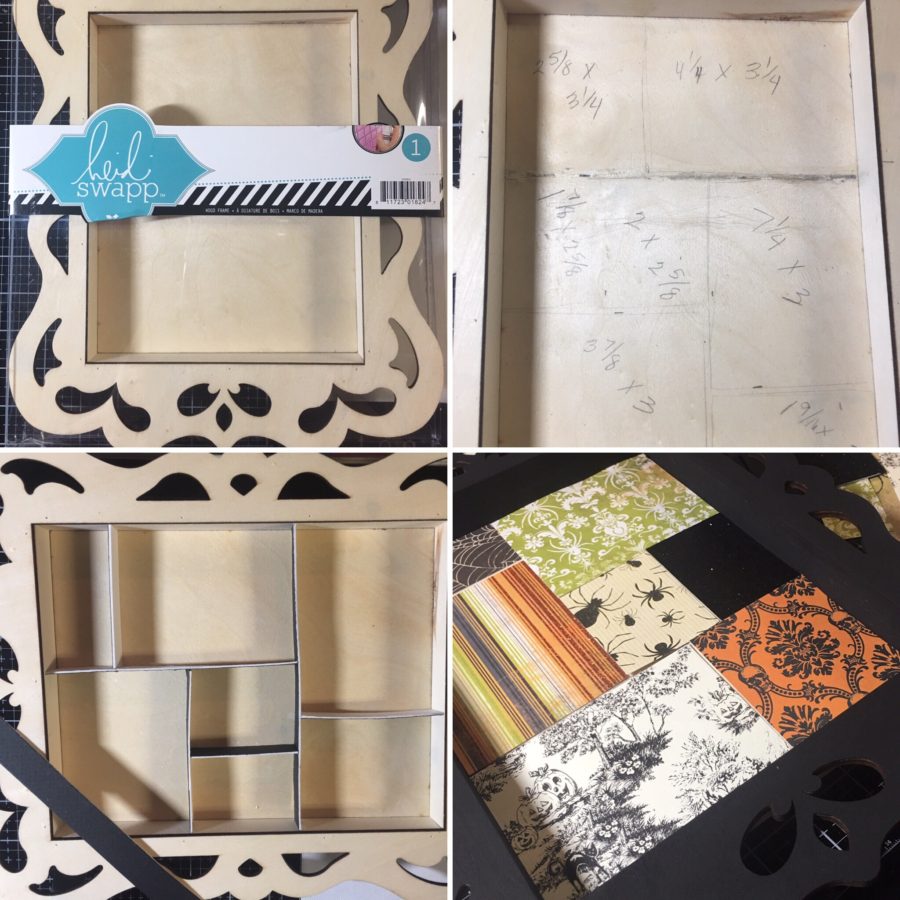
Step Two:
Measure and cut strips of mat board or chipboard (the width of the strips should be the depth of the inside of your shadow box). Cover the strips in patterned paper.
Hint: If you don’t have any chipboard on hand you can use a double thickness of cereal box or another packaging.
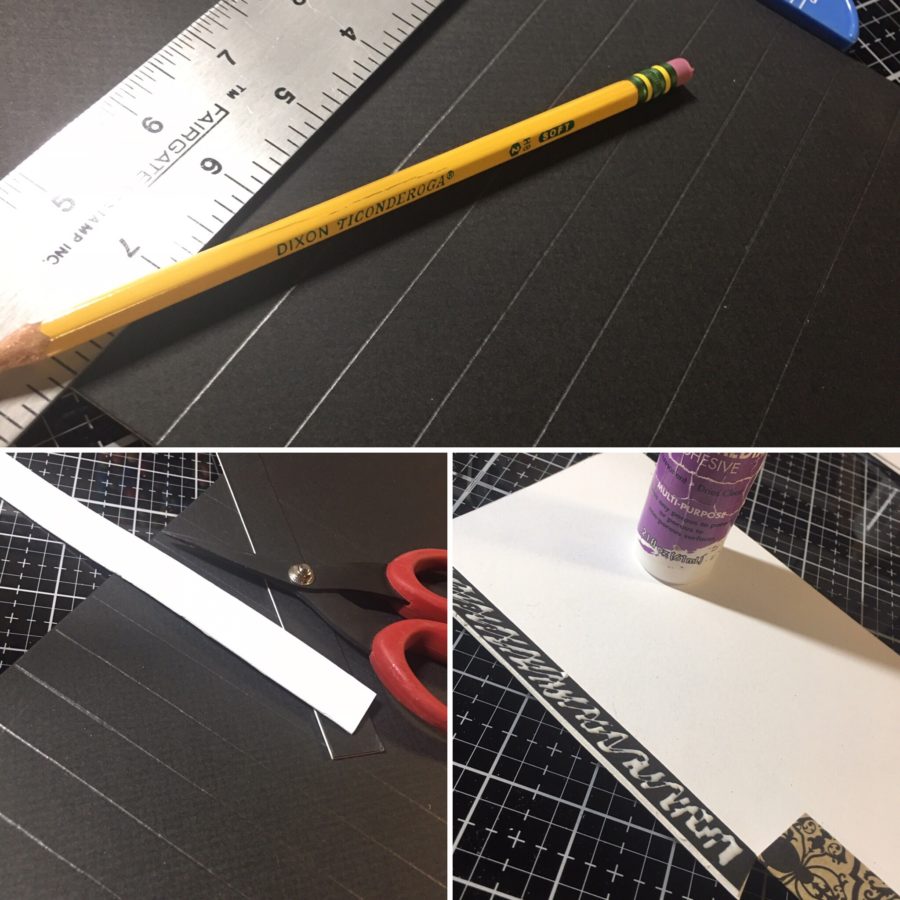
Step Three:
Ink the edges of the pattern paper pieces and adhere using Mixed Media Adhesive. Cut your chipboard strips to fit and adhere into the shadow box as pictured.
Hint: Use Mixed Media Adhesive for a strong permanent adhesive, but add a bit of hot glue to hold the pieces in place while the Mixed Media Adhesive dries completely.
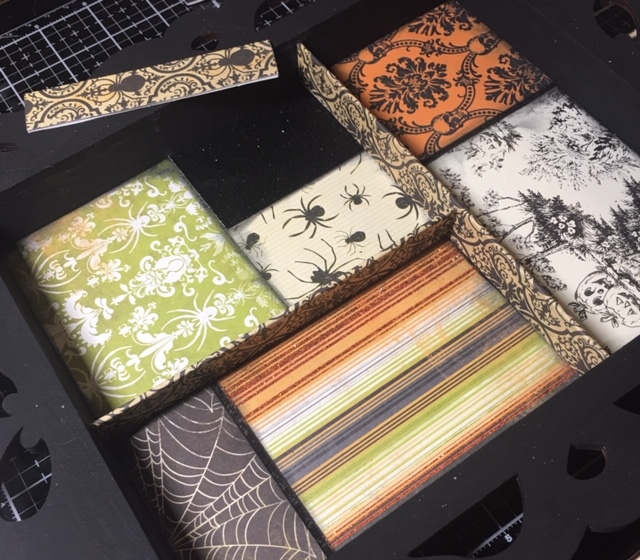
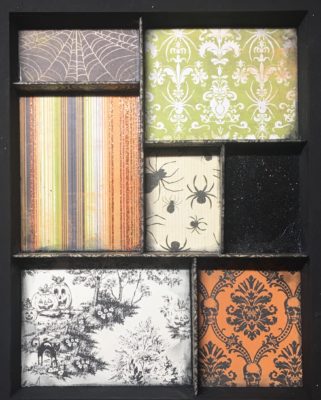
Step Four:
Dry brush silver craft paint over the base coat making sure you do not cover the black completely. You just want a bit of the silver so that when the foil is added there are different shades and tones.
Hint: If you do not have silver paint you can use any form of rub on metallic silver instead.
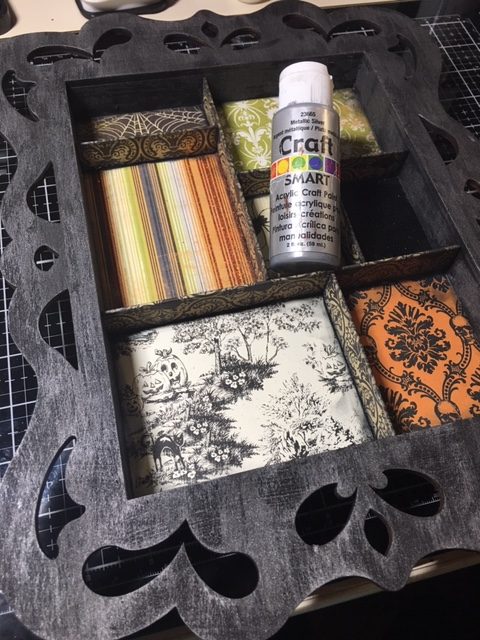
Step Five:
Using the Deco Foil Adhesive Pen, color portions of your shadow box frame, in sections, as desired and allow to dry for just a minute or two. Apply foil (shiny side up) and burnish with a popsicle stick until you can see the foil transferring from the plastic carrier sheet onto the frame.
Hint: Don’t cover the whole frame in foil – it is meant to be an accent.
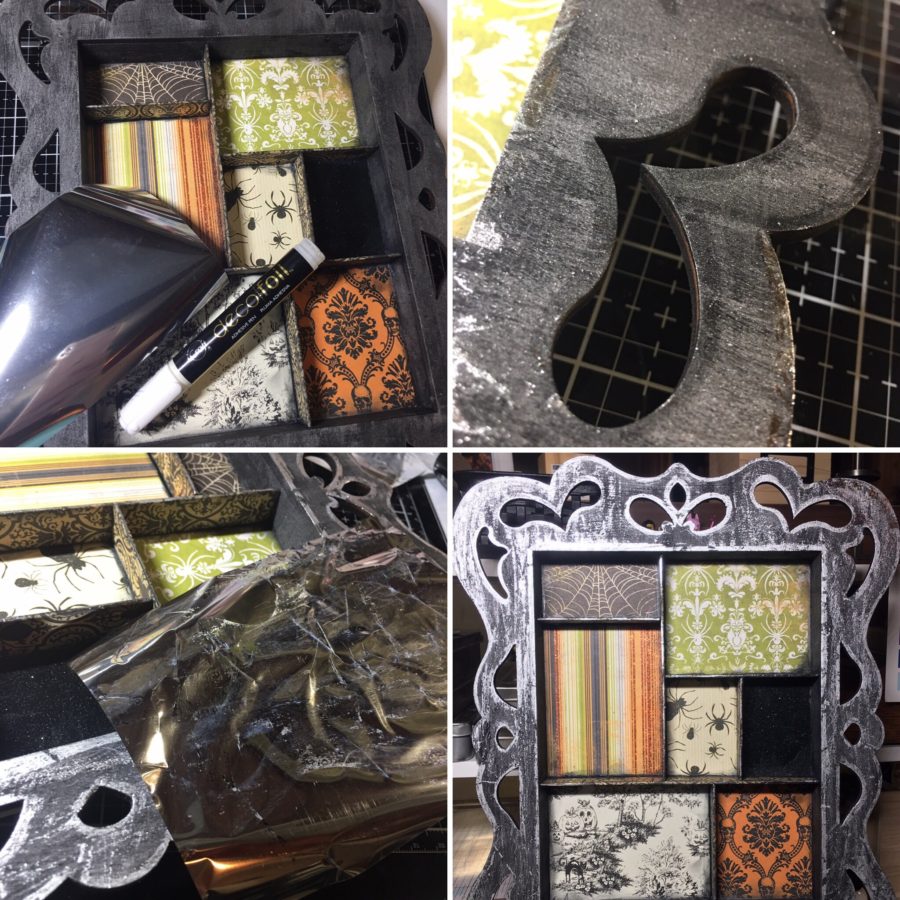
Okay, let’s take a break from our regularly scheduled program for some experimenting. I used a Tim Holtz Sizzix die to create the bat stencil pictured below. I really wanted to foil these bats randomly onto my shadow box frame. The question was . . . how? I practiced on this sheet of scrap paper and want to show you what I came up with and give you some tips.
Using a spatula I spread the Deco Foil Transfer Gel over the stencil the same way you would modeling paste. I did it in varying degrees of thickness to show you the difference. With modeling paste, you usually want a pretty thick layer, but with the Deco Foil Transfer Gel, thinner is better. If you look at the pic in the bottom left corner of the collage, you can see that the area stenciled more thinly not only dries faster, but it keeps the stencil shape better in the end.
The Transfer Gel is intended to be used on a surface that can be run through the foiling machine to adhere the foil. I’ve never let a product’s intent stop me yet lol. The Transfer Gel is ready to use when dried completely to clear.
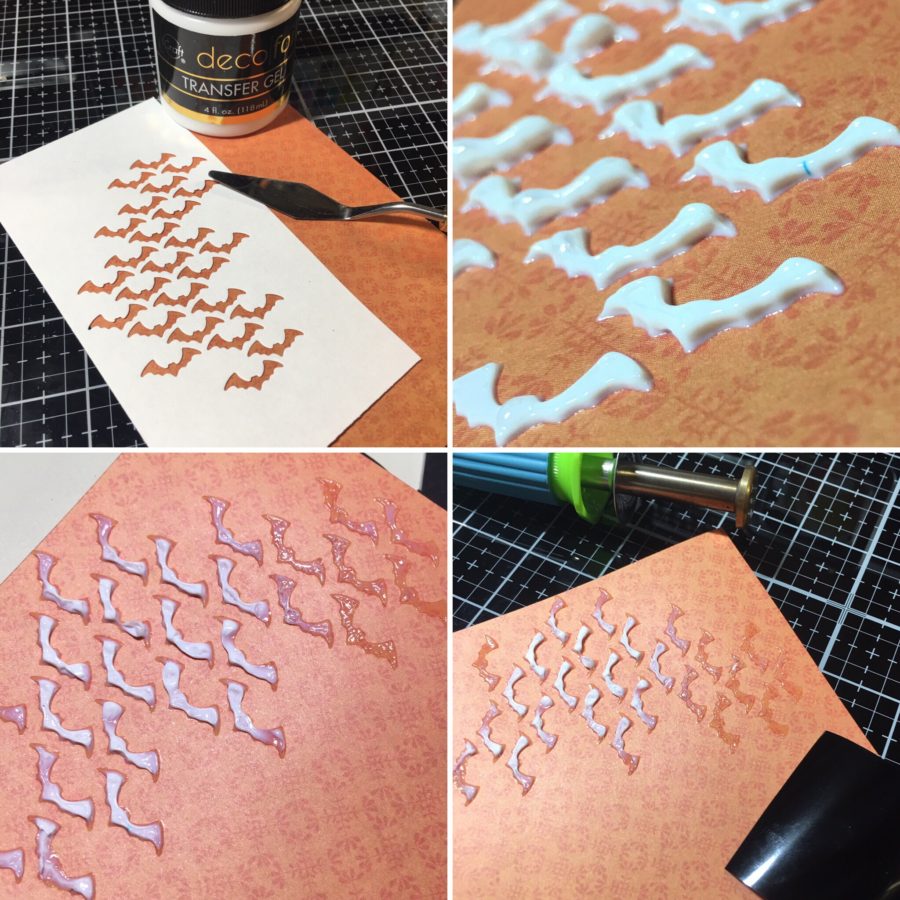
Back to our program . . .
Step Six:
Using the technique outlined above, stencil Deco Foil Transfer Gel onto your shadow box frame as desired. Allow to dry until clear.
Hint: If you do not have a stencil try making your own using a die-cutting system as I did.
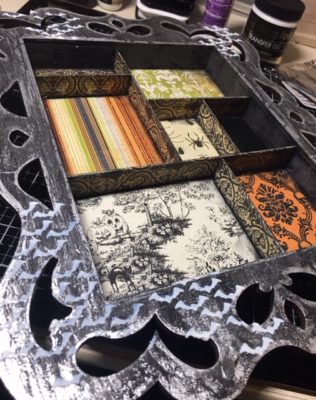
Once dry, lay your copper foil over the stenciled area, shiny side up, and using the flat attachment on a heat tool, rub lightly over the area until you can see the stencil shape through the foil sheet. NOTE: If you are using the type of heat tool I used, make sure you do not wait until it is completely heated or you will melt the plastic carrier sheet which contains the foil. I started using my heat tool as soon as it started to get hot and unplugged it in the middle of using it (continuing to use it as it cooled). This worked fabulously!!
Hint: If you do not have the type of heat tool I used, you can also use a heat gun, heating the top of the foil and burnishing as you heat it.
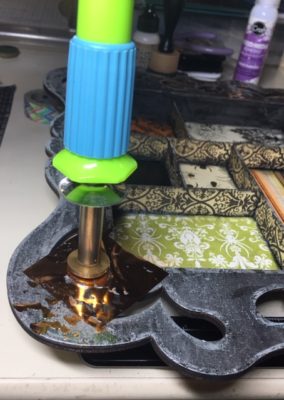
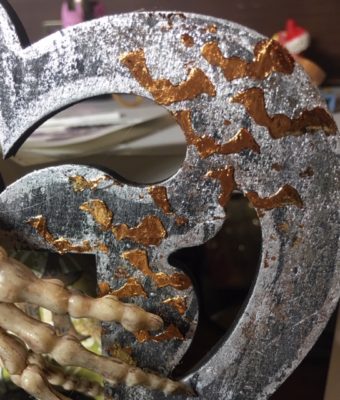
Step Seven:
Using your Deco Foil Glue Pen, add foil to your shadow box embellishments.
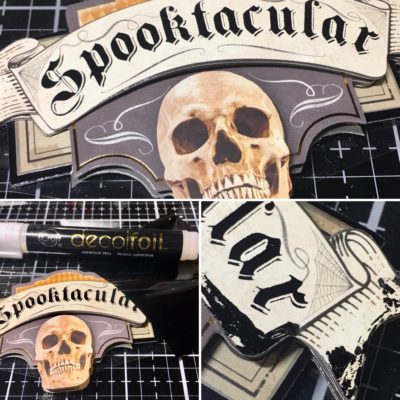
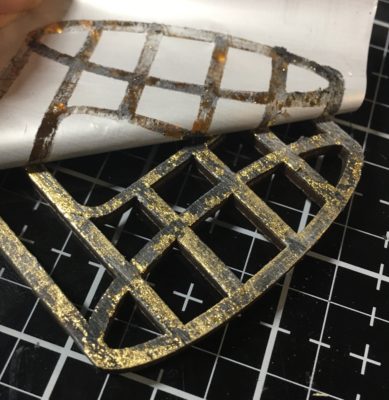
Alter your embellishments so they will fit with your theme.
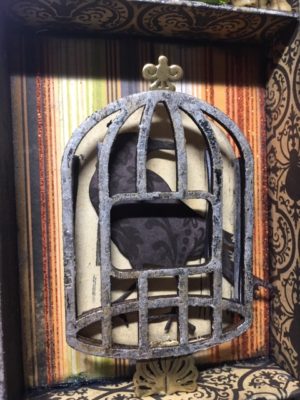
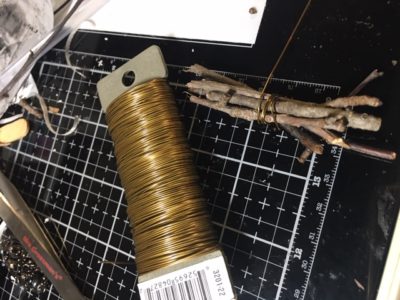
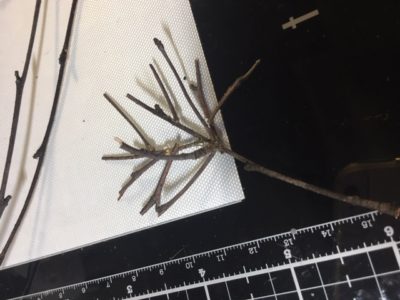
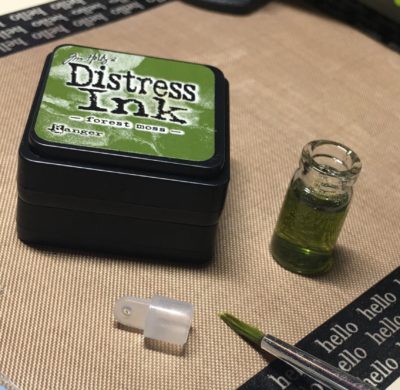
Add your embellishments to your shadow box compartments and cover with faux spider web to complete the look.

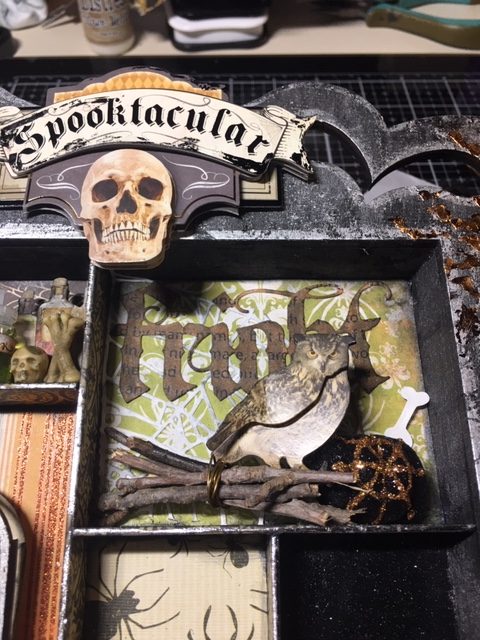
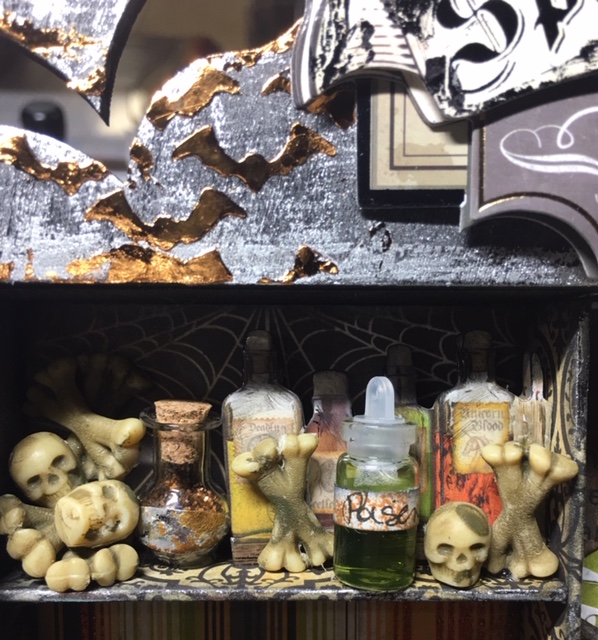
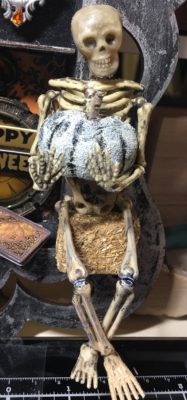
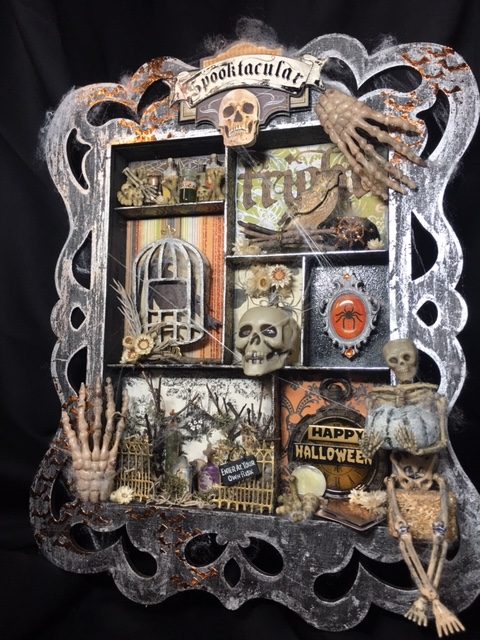
I hope this inspires you to create your own mixed media, altered shadow box. If you have any questions please ask in the comments section. Happy Crafting and Happy Halloween!!
Wendy

